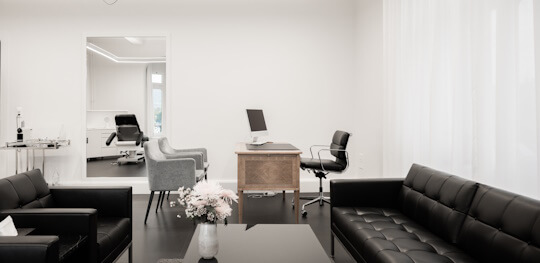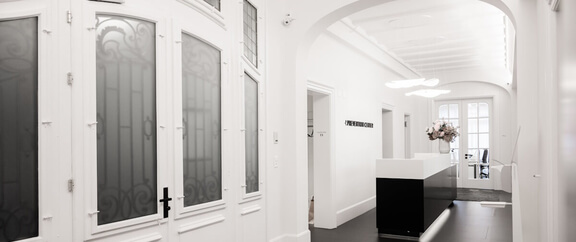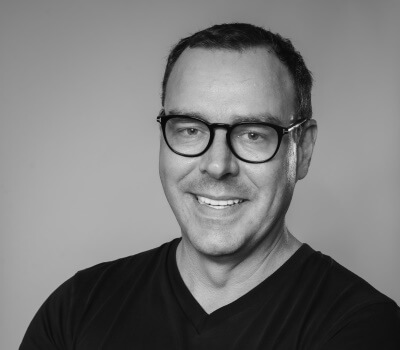Facts about lipoedema treatment
| Treatment duration | Approx. 1–3.5 hours |
|---|---|
| Anaesthesia | Local anaesthetic, sedation, generation anaesthetic |
| Admission | Outpatient |
| Follow-up treatment | No need to remove sutures; compression clothing for 6–8 weeks |
| Presentable | After 5–7 days |
| Exercise | After 3–4 weeks |
Lipoedema is a fat distribution disorder that occurs almost exclusively in women and involves increasingly large accumulations of fat forming in the lower half of the body. It primarily affects the thighs and calves, hips and the inside of the knees, though it can also go on to affect the upper arms. Without treatment, the condition will progress unchecked and heighten the affected person’s psychological suffering. This is because, in addition to the pain and physical complaints associated with lipoedema, people with the condition also suffer considerably as a result of the visual changes.
Compression clothing and manual lymphatic drainage is often recommended as a treatment. However, these methods can only provide temporary relief and must be applied for the rest of a person’s life to achieve the desired effect.
A lasting alternative is liposuction, which we often perform on patients with lipoedema at the prevention-center in Zurich. Not only does this treatment provide long-lasting relief from the symptoms, it also improves the patient’s appearance – boosting their quality of life and sense of wellbeing.
Benefits of liposuction for lipoedema at the prevention-center in Zurich

- Detailed personal consultation with precise surgical planning
- Individually tailored treatment methods
- Stringent quality and hygiene standards
- Years of experience performing liposuction
FAQs about lipoedema treatment
What exactly is lipoedema?
Lipoedema is a fat distribution disorder that primarily affects the thighs, calves, the inside of the knees, the hips and the upper arms. The disorder is progressive and passes through several stages. It starts as minor dimples on the surface of the skin (cellulite); these dimples then become more pronounced with visible indentations until, in the third stage, large, deformed folds of skin develop.
How do I know if I have lipoedema?
Typical symptoms of lipoedema include a hardening of the subcutaneous fatty tissue and cellulite (orange peel skin) or a feeling of heaviness in the affected regions. Lipoedema is also characterised by increased sensitivity to touch, tenderness to the touch and a tendency to bruise easily. People with lipoedema may find that their legs tend to swell particularly when sitting down and standing up. If you suffer from such issues, you should discuss this with a doctor. You can arrange an appointment for a comprehensive examination so that we can start a suitable course of treatment.
What treatments are available for lipoedema?
Lipoedema is usually treated with non-surgical methods to begin with. These include regular manual lymphatic drainage in combination with compression clothing. However, if non-surgical methods fail to achieve the desired results or if a patient is looking for an alternative treatment with lasting effects, the only option is removing the excess fat cells (through liposuction). Although this treatment cannot remedy the disorder itself, it can significantly reduce the pain and other symptoms, which in turn delivers a tangible improvement in the patient’s quality of life.
What does treatment for lipoedema involve?
Before performing the procedure itself, we will carry out an extensive preliminary examination and hold a detailed personal consultation with you at the prevention-center in Zurich. Based on the findings of this examination, we will put together a treatment plan comprising the most suitable methods for you. We will hold a further consultation to discuss the potential outcomes and benefits of this method with you and discuss the treatment process and any risks to you.
On the day of the operation, we will administer an anaesthetic by injection into the affected area, which will loosen the fatty tissue and make it easier to remove. Fine cannulas are then used to systematically remove the fatty tissue. This might involve removing several litres of fat depending on the patient’s circumstances.
After the liposuction, you will remain under observation at the prevention-center in Zurich for a few hours. You should then allow yourself to rest for a few days and recover from the operation. Patients are usually able to resume light activities after 2 days, though you should avoid physically strenuous activities such as exercise for 1 or 2 weeks. Please follow any other aftercare recommendations you are given and make sure to attend your check-up appointment at the prevention-center in Zurich.
What do I need to bear in mind following treatment for lipoedema?
You need to allow yourself and your body a few days to rest after liposuction. An important part of helping the healing process is wearing the recommended compression clothing (for approx. 6–8 weeks) and avoiding physically strenuous activities for the first 3–4 weeks.
When will I be able to go about my normal routine and exercise after the operation?
That depends on the scope of the treatment. Most of our patients are presentable again after 5–7 days. However, you should only start exercising and performing other strenuous physical activities after 1–2 weeks at the earliest.
Can lipoedema reoccur following surgery?
Although liposuction permanently removes the fat cells, it is not possible to remove absolutely all fat cells from the affected area. Additionally, the operation does not remedy the underlying cause of the fat distribution disorder. It is, therefore, theoretically possible that further accumulations of fat tissue will develop following liposuction. However, such occurrences are very rare and take several years. In such cases, liposuction can be performed again. If the condition affects larger areas, it is often necessary to conduct liposuction in stages over 2 or 3 operations.
Are there risks associated with liposuction?
Like all surgical procedures, liposuction is associated with certain risks. For example, swelling and bruising may appear after the procedure around the treated areas, though such symptoms should recede of their own accord within a few days. However, consistently wearing the recommended compression clothing will minimise the risk of swelling and other potential side effects. Wound-healing disorders, unevenness, excess skin, infections and thromboses can occur in very rare cases. With this in mind, you should follow the aftercare instructions diligently and make sure to attend any check-up appointments at the prevention-center in Zurich.
How much does liposuction for lipoedema cost?
It is not possible to give a blanket figure because the symptoms of lipoedema vary significantly from person to person, so the scope of treatment may be more or less extensive. We would be happy to put together a tailored quote for liposuction for you, following a thorough examination and a personal consultation at the prevention-center in Zurich.
Contact

PREVENTION-CENTER AG UTOSCHLOSS
Utoquai 31
8008 Zürich
How to get there
PREVENTION-CENTER AG ZUG
Aabachstrasse 8
6300 Zug
How to get there
PREVENTION-CENTER AG BERN
Kornhausplatz 7
3011 Bern
How to get there
PREVENTION-CENTER AG ST. GALLEN
Kornhausstrasse 25
9000 St. Gallen
How to get there
VISITING HOURS
| MO - FR | 8 AM - 6 PM |
OVER THE PHONE
| MO - FR | 8 AM - 5 PM |

